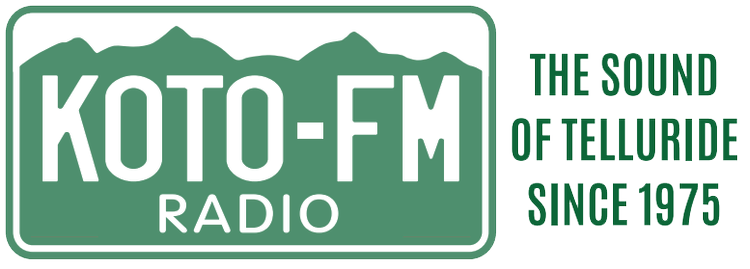by Julia Caulfield
It is a hot and sunny day on Wright’s Mesa. At the San Miguel County Fairgrounds in Norwood, dozens of people fill in to the outdoor events center for the 2020 Junior Livestock Auction.
“Today is the culmination of about 34 kids’ hard work over the last year. They have taken on various projects ranging from beef, lambs, goats, we even have some turkeys, ducks, and hogs this year,” says Regan Snyder, President of the San Miguel Basin Fair Board.
All the young people participating are members of 4-H of Future Farmers of America – or FFA – programs working to get young people involved in agriculture and animal husbandry.
The auction is truly a community affair. Parents, and community members sit in bleachers, as the you people walk their livestock around a ring filled with sawdust, showcasing their animals. Little kids run around, a dog finds the shade under the bleachers.
As bidding gets underway, buyers are showing up for the young people. The first steer goes for $9,000. Most animals are upwards of $2,00 to $3,000.
Cimmy Alexander is the leader of 4 Stars 4-H Club in Norwood. She says this year is one of the best turnouts she’s seen in years.
“I think people realize it’s time to get back to basics, and go see where your meet is coming from. Go see where your freezer is being filled,” she says.
In a year when everything has been turned upside down, Alexander says having the auction, and filling your freezer with local meat is a nice way to bring some normalcy.
She adds, for the kids, raising animals helps them appreciate where their food comes from.
“My son is 16 years old,” she says, “and I remember when he was in kindergarten, they’d all talk about their lunches. They’d all be like, ‘I have a peanut butter and jelly’, ‘I have this’. My son would say ‘I’m eating pig’s butt’, which was a ham steak, but they know that comes from the side of the butt. From little, when we eat something, it’s ‘okay, where is that on our animal?’.
But in addition to a sense of normalcy for the buyer or knowing where your food comes from, Alexander and Snyder say the auction is also about supporting the young people, who have been working hard for the last 10 months to raise their animals.
One of the young people showing at the auction is Alexander’s daughter, Dylan. Dylan is 14 years old.
“I showed a steer and a heifer this year, but I just sold my steer. I won’t sell my heifer. My heifer will go out to the field to become a mom,” she says.
Dylan has been participating in the auction for five years. In addition to steer, she’s also shown lambs, rabbits, goats.
“I like the animals. The animals are fun to deal with and they teach you a lot of responsibility,” says Dylan.
Hailey Hibbert aggress.
“It’s a lot of hard work put into these animals,” Hibbert says, “and you build passion for them. For me, it’s going to be really hard to let go of my animals – as it is every year – but it teaches you time management and hard work on how to take care of, not only yourself, but you have two animals to take care of.”
Hibbert is a recent high school graduate. She’s 18-years-old, and headed to college in Grand Junction this fall. Like many of the young people, the money she earns from the auction goes right into a college fund.
Hibbert has been participating in 4-H for 11 years. She says she keeps coming back each year because she likes seeing the younger kids find their passion for raising animals.
“I would tell the younger generation to go out there and give it your all, and if you see passion in it, the buyers see that and they go for the people that actually care for your projects,” she says, “and the community support, they’ll always be there to make it happen.”
At the end of the day, all the animals are sold. They’re either taken home by the buyer to be put out to pasture, or on their way to a processing plant. A year’s worth of a work is over in a few short hours…but only for a moment. Come fall, the young people will be picking out their new projects and starting the process all over.

